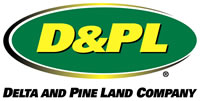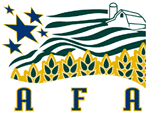 Here’s the latest report from Paul McKellips, Global Outreach Officer, US Embassy Baghdad, The Green Room – Public Affairs GO Team. He’s still finding the news you won’t find anywhere else. This time he interviews a Florida boy who’s doing what he can to help out.
Here’s the latest report from Paul McKellips, Global Outreach Officer, US Embassy Baghdad, The Green Room – Public Affairs GO Team. He’s still finding the news you won’t find anywhere else. This time he interviews a Florida boy who’s doing what he can to help out.
You can listen to Paul’s report here: logan-barbee.mp3
Logan Barbee is a Senior Agricultural Advisor working for the Provincial Reconstruction Team (PRT) in the Babil Province (ancient Babylon) region of Iraq. He retired from the University of Florida’s Extension system in order to begin his second tour in Iraq. Logan is an agricultural purist and he’s very passionate about making a difference in Iraq. Check out the USDA website for more information on Logan Barbee.

 It’s that time of year when you can see some really cool skies. This is a thunderhead off in the distance on the drive to Nashville today.
It’s that time of year when you can see some really cool skies. This is a thunderhead off in the distance on the drive to Nashville today. Two new cotton varieties from the
Two new cotton varieties from the  The official publication of the
The official publication of the  It’s a product that has a wide range of uses, as a potential component in running shoes and ski boots, to cosmetics, to automotive parts.
It’s a product that has a wide range of uses, as a potential component in running shoes and ski boots, to cosmetics, to automotive parts.  Previous journalism experience does indeed count when you take over an editor position and so does a little public relations work! Congrats to Greg Vincent on his new gig with Farm Journal Media. He’s been named editor of
Previous journalism experience does indeed count when you take over an editor position and so does a little public relations work! Congrats to Greg Vincent on his new gig with Farm Journal Media. He’s been named editor of  The dates and locations are set for The Chicago Farmers Summer Tour. The Chicago Farmers aim to offer a forum for education and the exchange of information between members and the agribusiness industry. The summer tour is the latest event meant to enhance knowledge, profitability, stewardship, consumer awareness, and fellowship among participants.
The dates and locations are set for The Chicago Farmers Summer Tour. The Chicago Farmers aim to offer a forum for education and the exchange of information between members and the agribusiness industry. The summer tour is the latest event meant to enhance knowledge, profitability, stewardship, consumer awareness, and fellowship among participants. Laura just brought my attention to “Slow Food,” an organization that I coincidentally mentioned in
Laura just brought my attention to “Slow Food,” an organization that I coincidentally mentioned in  The Agriculture Future of America Board of Directors has elected to renew board membership of the vice president of Monsanto Global Chemistry. The Board re-elected Vice President Mike Frank at a meeting last month.
The Agriculture Future of America Board of Directors has elected to renew board membership of the vice president of Monsanto Global Chemistry. The Board re-elected Vice President Mike Frank at a meeting last month.